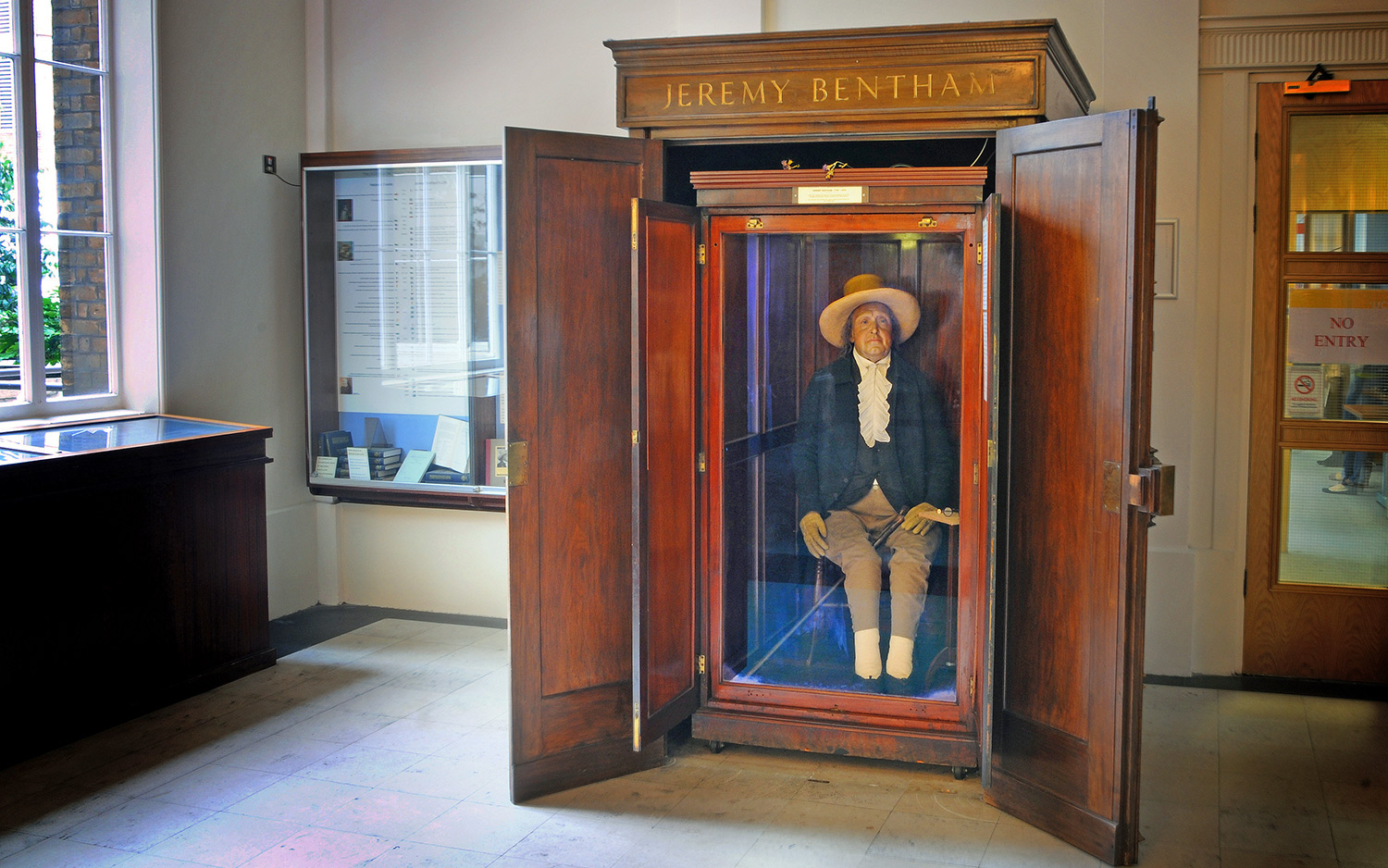Oddball Philosopher Had His Mummified Body Put on Display … and Now His Rings Are Missing

Famed philosopher Jeremy Bentham — an oddball British gentleman who requested that his dead body be mummified and put on public display — is missing some rings.
To be exact, exactly 20 memorial rings that he gifted to intellectuals, scientists and leaders when he died in 1832 are missing. And now, researchers are asking the public to help track them down.
These rings aren't ordinary, either — at least by today's standards. Each ring features a silhouette of Bentham's head, his engraved signature and, on the reverse side, a glazed compartment containing a lock of his hair. [Photos: The Amazing Mummies of Peru and Egypt]
The rings "help to highlight how attitudes to death and memory have changed over time," Subhadra Das, a collections curator at University College London (UCL), where Bentham's mummified body is on display, said in a statement. "The rings and the lock of hair might seem morbid to some today, but it was fairly common practice at the time."
Das noted that the Victorians were rather sentimental when it came to mourning.
"Our modern, Western views of death come from the early 20th century, when World War I made grief a luxury and the psychological theories of Sigmund Freud encouraged its repression," Das said. "I think the Victorians would find our attitude to death rather cold."
Bentham came up with the idea to leave behind memorial rings when he was just 21 years old, according to a statement from UCL. Indeed, his final will and testament listed 26 people who were to receive a ring. Bentham commissioned John Field, an artist who also worked for King William IV (the third son of George III, who battled the Americans during the Revolutionary War) and Queen Adelaide. It's believed that Field finished Bentham's silhouette in just 5 minutes, due to his incredible skill at portraiture, UCL reported.
Get the world’s most fascinating discoveries delivered straight to your inbox.
"The mourning rings were probably commissioned by Bentham in 1822, when he had his silhouette painted by Field," Tim Causer, a senior research associate with the UCL Bentham Project, said in the statement. "We also know that on 2 November 1822, Bentham’s secretary took some of his hair to Field and his partner John Miers for the rings."
The 26 people who received a ring include military commander Marquis de Lafayette (1757 to 1834), a French aristocrat who fought in the Revolutionary War; the utilitarian philosopher John Stuart Mill (1806 to 1873); the Guatemalan philosopher and politician José del Valle (1780 to 1834); and the editor and linguist Sarah Austin (1793 to 1867), whose husband, John Austin, was the first professor of jurisprudence at the University of London.
UCL has four of the 26 rings, including one that has not been inscribed, so it's unclear who the recipient was. Surprisingly, the ring that belonged to John Stuart Mill was discovered by two UCL alumni a world away in a New Orleans jewelry shop.
The whereabouts of two other rings are also known: One is owned by the descendants of William Stockwell, a servant of Bentham, and another ring that was left to the French economist Jean-Baptiste Say was recently auctioned off at Christie's.
It's anyone's guess where the remaining 20 rings are, said UCL, which asked the public to come forward with any clues or knowledge about the rings' whereabouts. [Gallery: Oldest Living Things in the World]
"We can safely assume that [Guatemalan philosopher and politician] José del Valle received one, as he is featured wearing it in a portrait," Causer said. "Interestingly, on the bookshelf of that portrait is one of Bentham’s works, as well as a Spanish translation of Say’s 'Traité d’économie politique.' It’s a neat, tangible link between Bentham, Say and del Valle."
The rings are just one aspect of Bentham's quirky funerary arrangements. As mentioned, he requested that upon his death, his body be publicly dissected before being stuffed, preserved and put on display — basically, driving home his belief that bodies were just as valuable in death as they were in life, and that donated remains could help advance the field of science. In fact, his actions epitomized the Anatomy Act 1832, which allowed medical practitioners and students to dissect donated bodies, Das said.
Bentham even asked that his mummified body be wheeled out to parties as a way to help his friends mourn his passing, according to the Daily Mail. However, during the preservation process, Bentham's head turned much darker than the rest of his body. Concerned that Bentham's real head would frighten visitors, UCL put a wax head on his mummified body instead, which has been on display since 1850, the Daily Mail reported.
During his lifetime, Bentham promoted utilitarianism and animal rights. He also helped establish the first police force in Britain, London's Thames River Police, in 1800. In addition, he's known for the idea of the "panopticon," a concept in which inmates can be watched by guards in central towers, according UCL's Bentham Project.
Original article on Live Science.

Laura is the managing editor at Live Science. She also runs the archaeology section and the Life's Little Mysteries series. Her work has appeared in The New York Times, Scholastic, Popular Science and Spectrum, a site on autism research. She has won multiple awards from the Society of Professional Journalists and the Washington Newspaper Publishers Association for her reporting at a weekly newspaper near Seattle. Laura holds a bachelor's degree in English literature and psychology from Washington University in St. Louis and a master's degree in science writing from NYU.
 Live Science Plus
Live Science Plus







